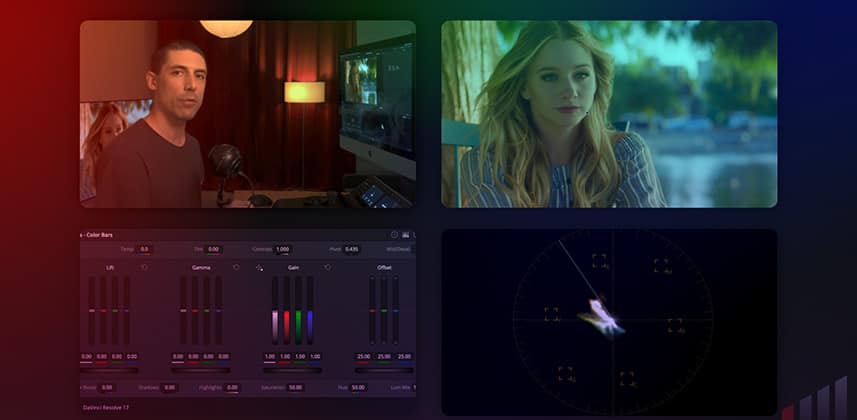| Series |
|---|
Flexing Fundamentals Part 5: Color Balancing Operations
In this final Insight of this Flexing Fundamentals series, we’ll look at the key principles and techniques I like to keep in mind when balancing images. This balance might be corrective in nature — e.g., neutralizing a green cast in the footage — or creative in nature — e.g., adding a push or wash of warm color.
Either way, one of the ideas I find most helpful for optimizing my process and my results is to confine myself to two dimensions rather than three. This idea can take different forms, and we’re going to explore two of them today.
Key takeaways from this Insight
By the end of this Insight, you should have a solid understanding of:
- Using the vectorscope “X” technique to more easily evaluate balance
- Thinking not only about red, green, and blue, but also cyan, magenta, and yellow — and the benefit of choosing and manipulating just two of these
- Why too much freedom in color grading can be paralyzing, and why limitations can set us free
Related Insights
- Printer Points – An Introduction To The Offset Control: Dan takes a look at the offset controls. The oldest and most overlooked primary controls in Resolve. Great for shot balancing.
- White Balancing Shots and Solving Common Problems: Learn how to white balance shots with mixed color temperatures. Plus, how to deal with subtle color balance issues.
Questions or thoughts? Leave a comment!
Is this Insight useful to you? Let us know! Mixing Light thrives on feedback, and we’re wondering if you found this helpful or if you have more questions we need to address?
– Cullen
Member Content
Sorry... the rest of this content is for members only. You'll need to login or Join Now to continue (we hope you do!).
Need more information about our memberships? Click to learn more.
Membership optionsMember Login


